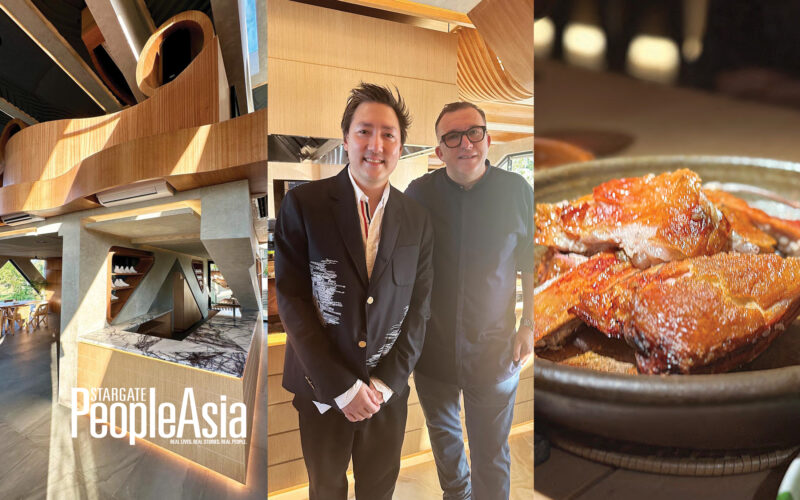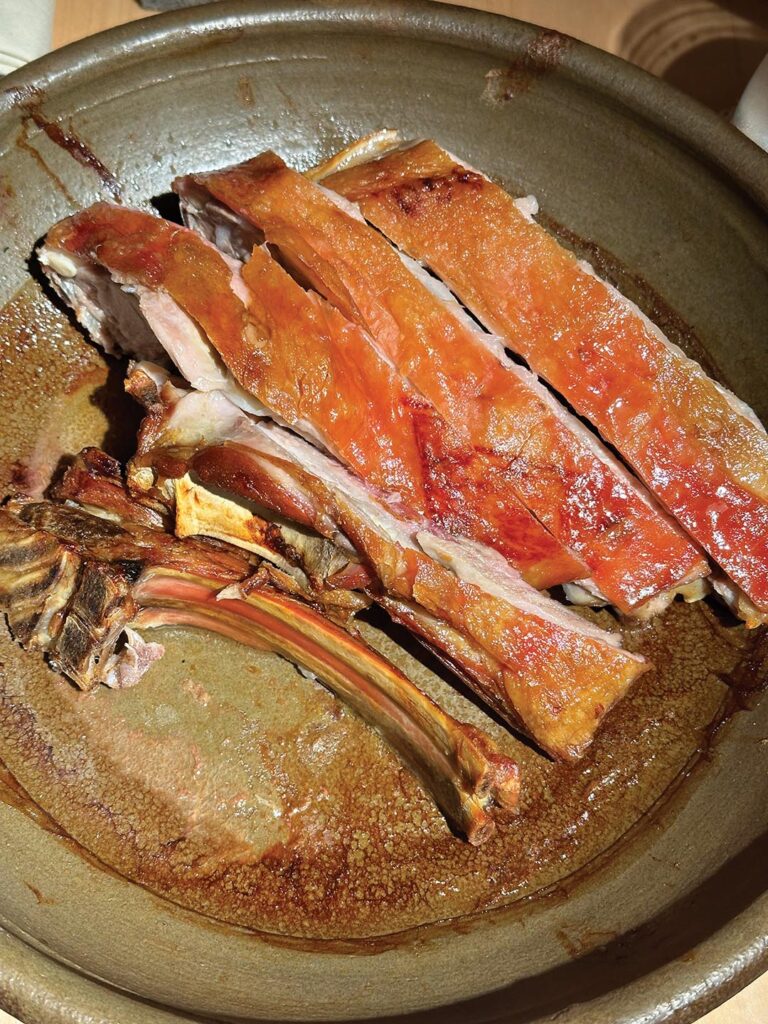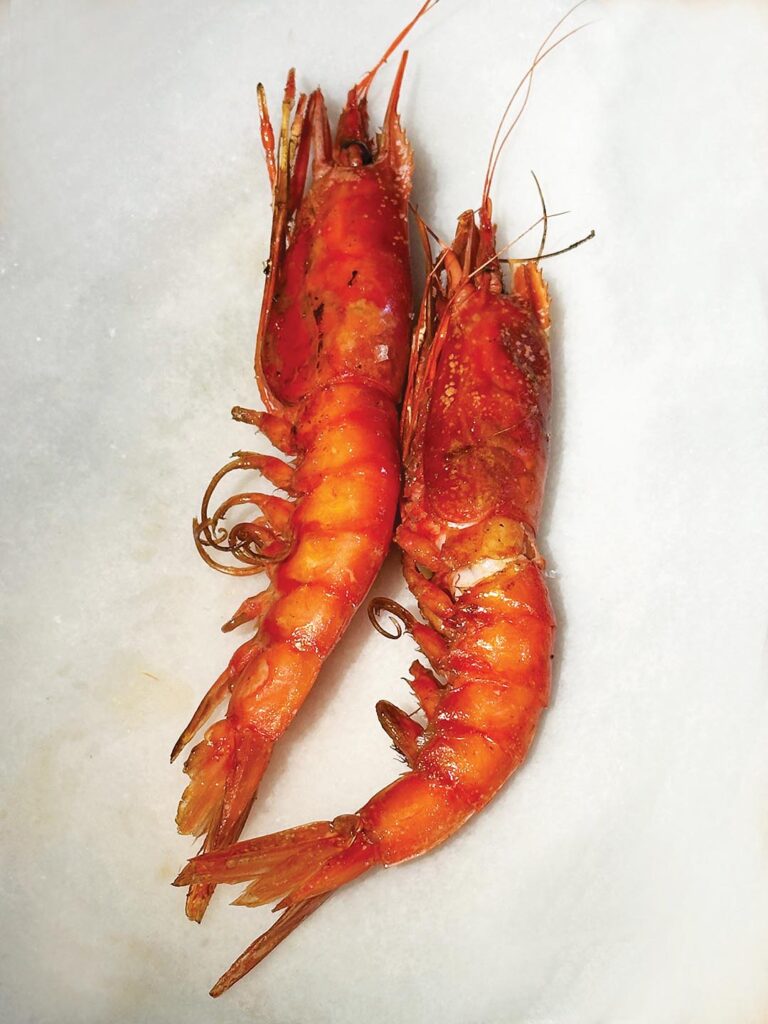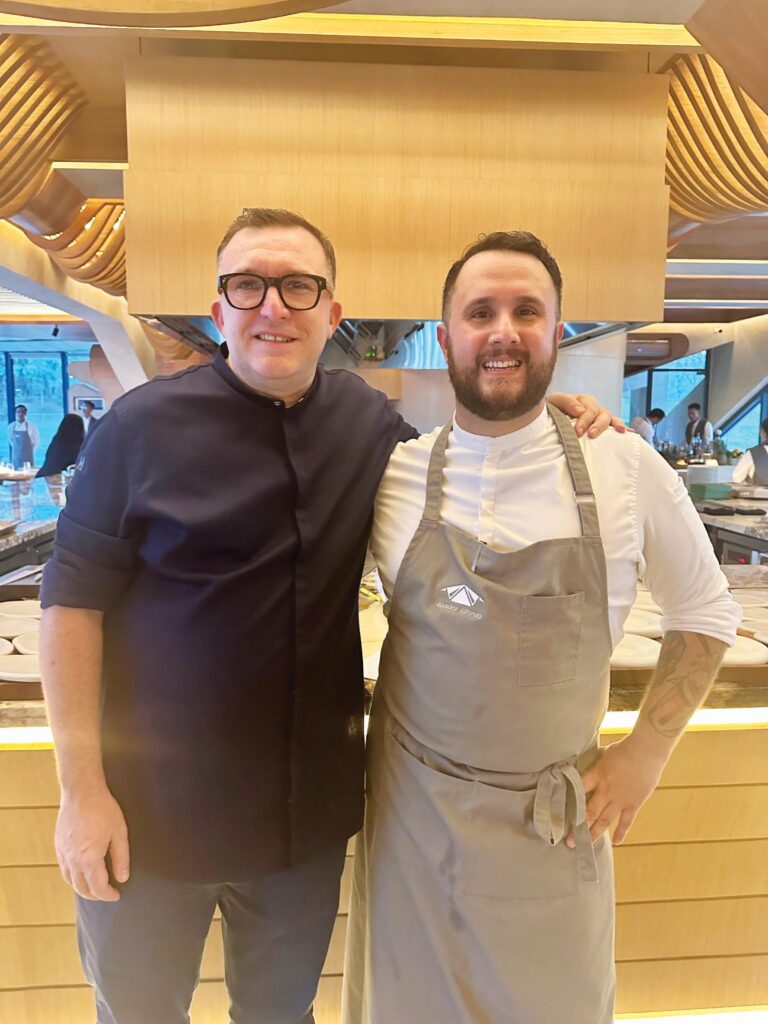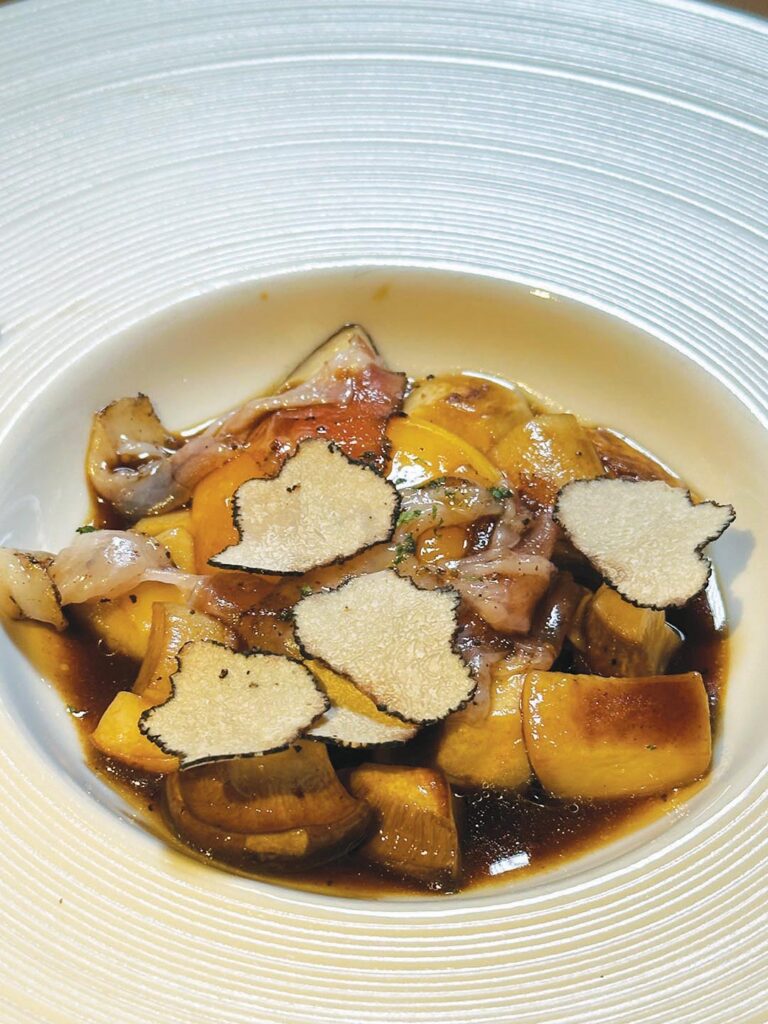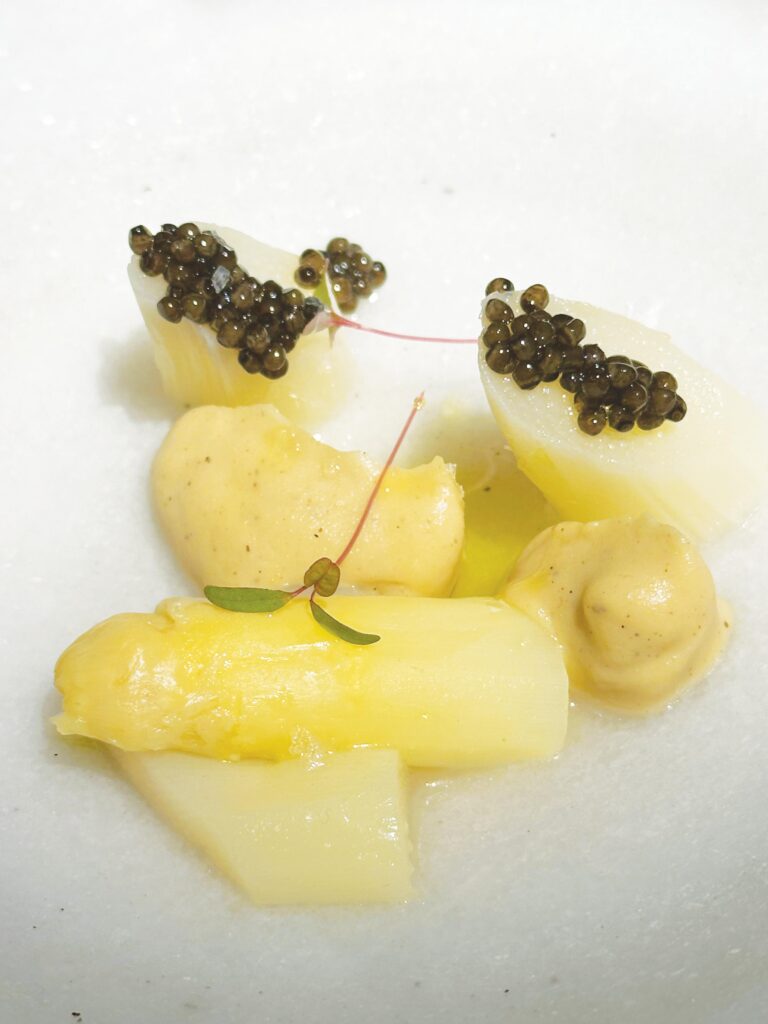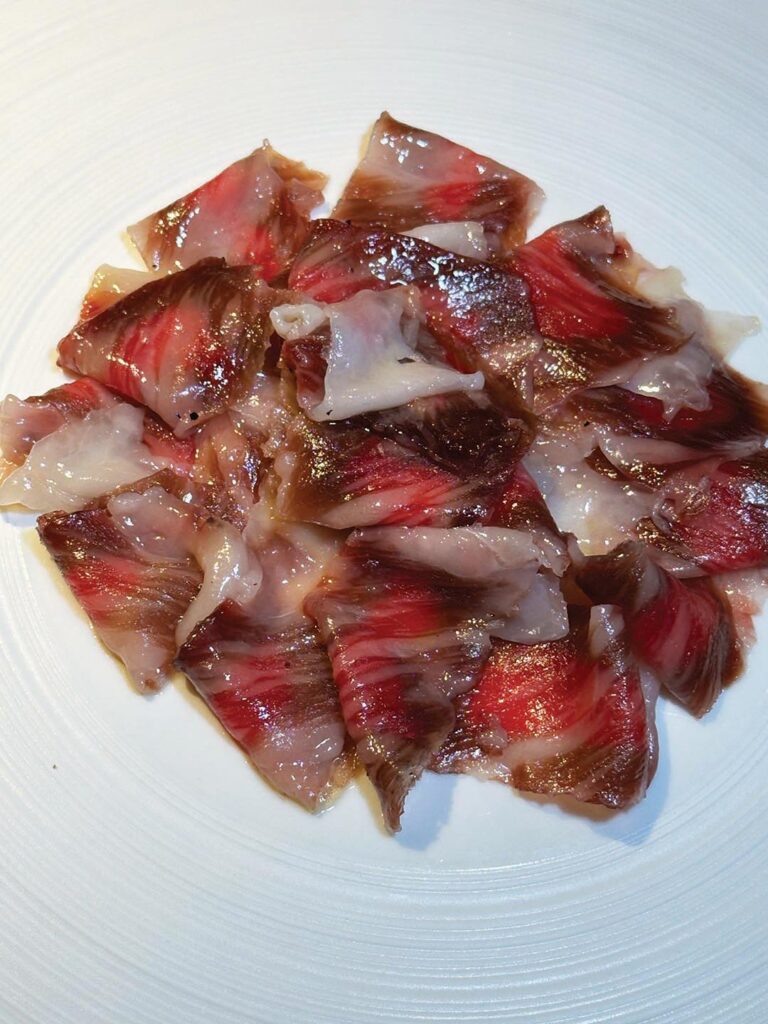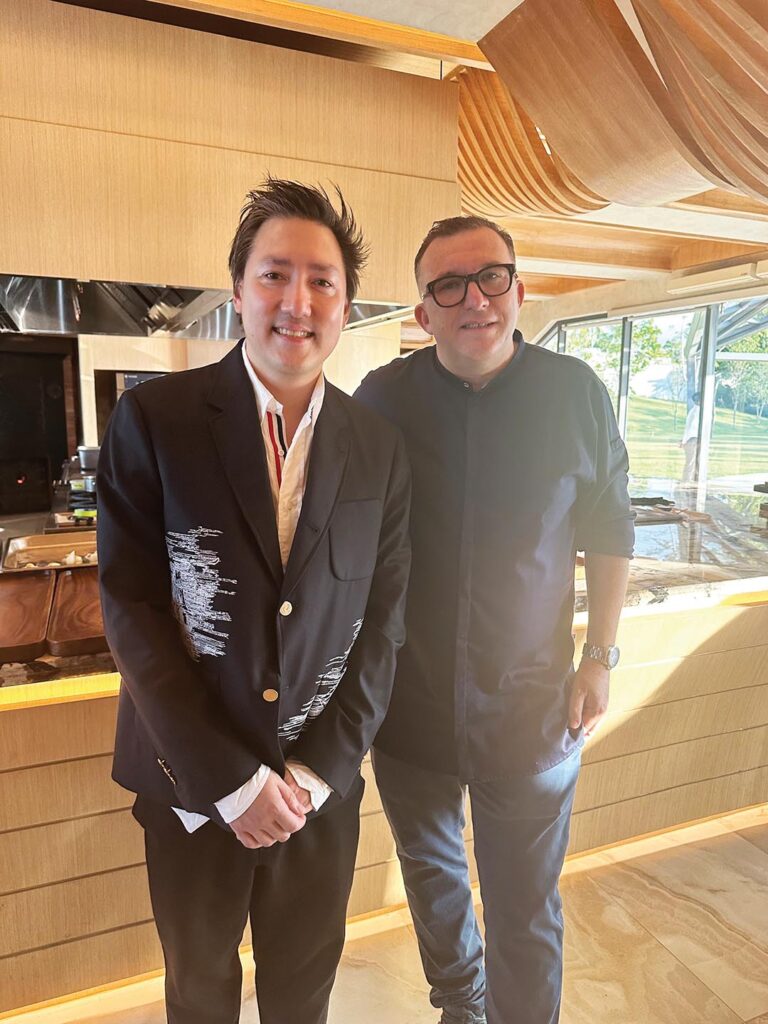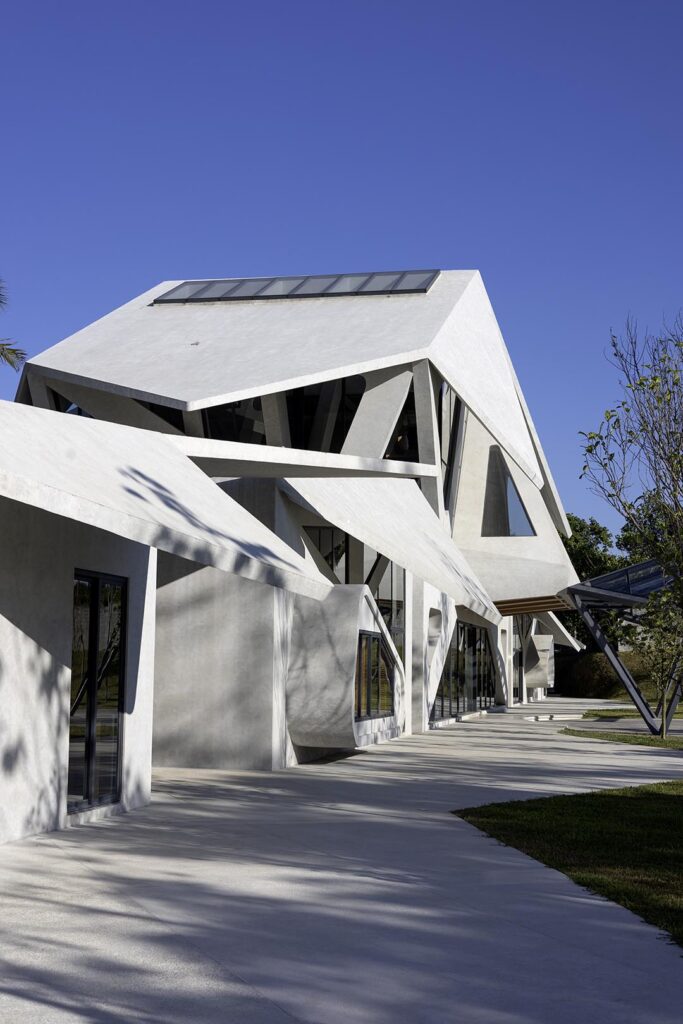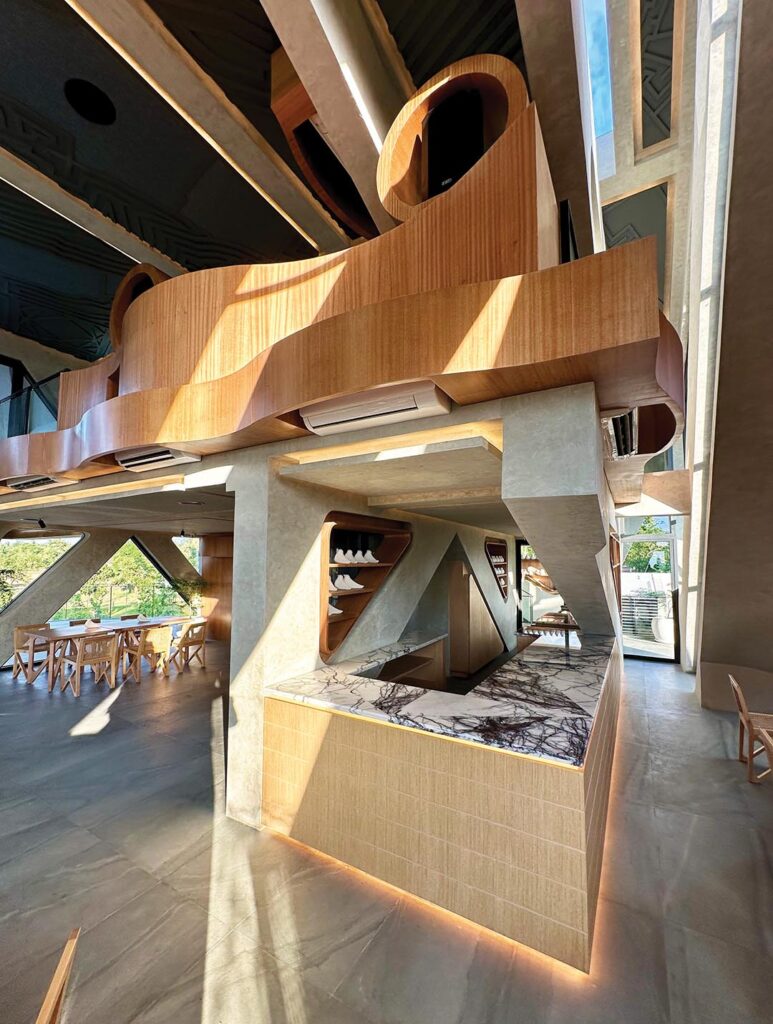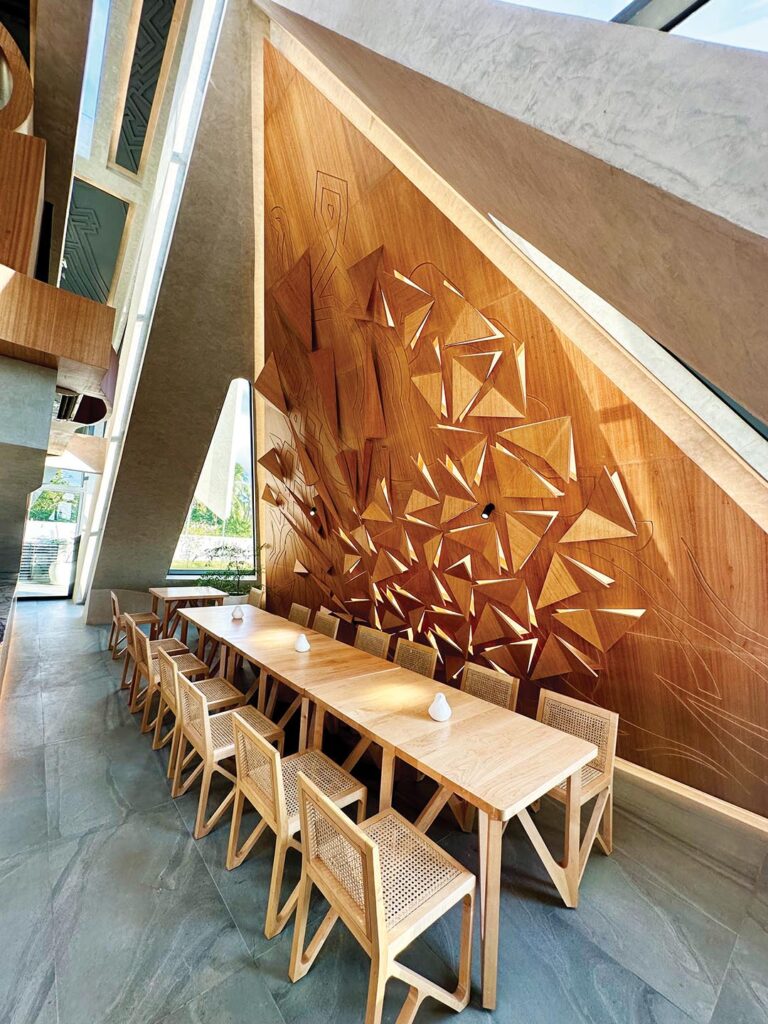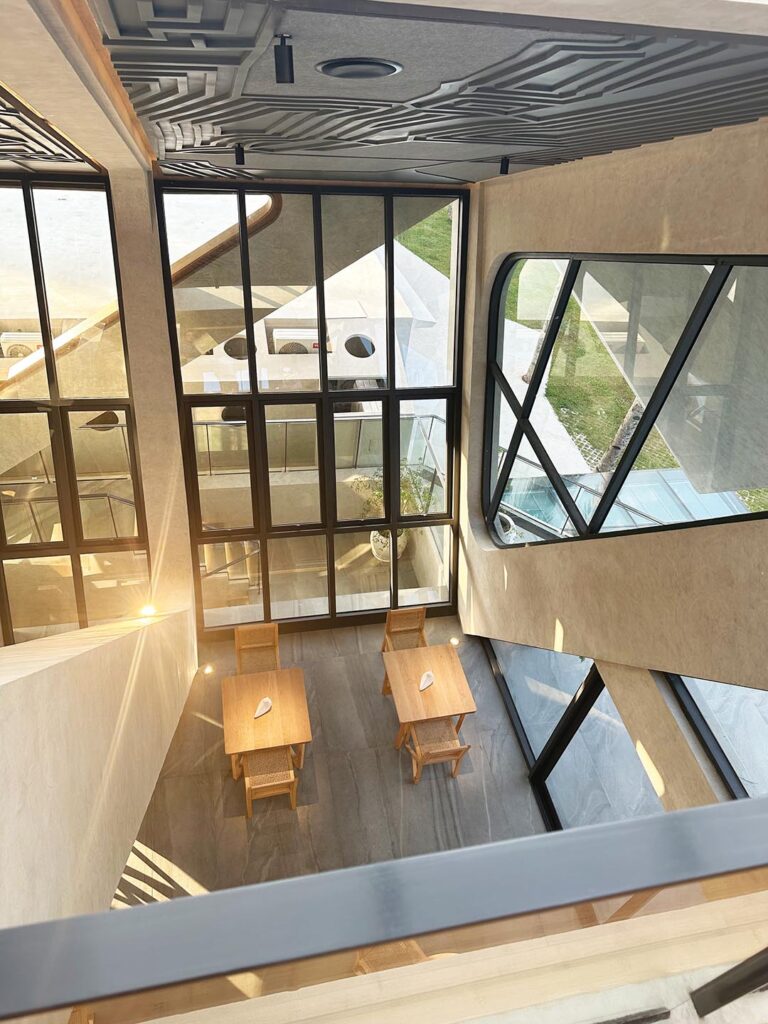Chef Chele Gonzalez and architect Carlo Calma team up anew to advance the often-unseen side of Spanish culinary tradition — roasting. And with Carlo in charge of the aesthetics, guests can rest assured of dining in modern style.
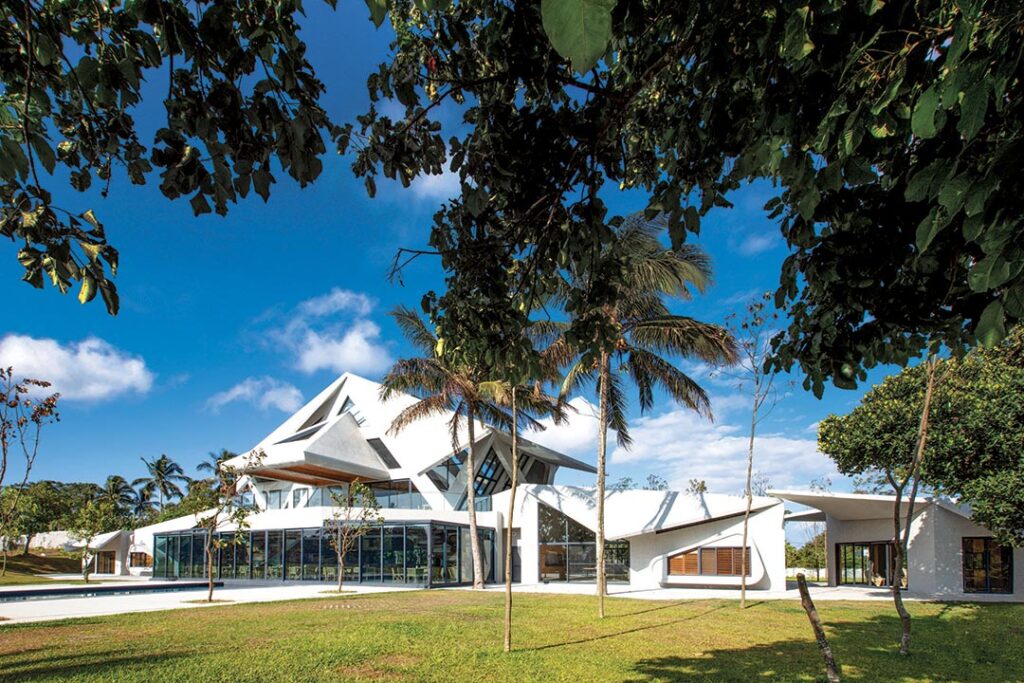
By ALEX Y. VERGARA
Spanish chef Chele Gonzalez and Filipino architect Carlo Calma, longtime business partners behind renowned restaurant Gallery by Chele, took their collaboration to new heights with the recent opening of Asador Alfonso. Nestled in a secluded nine-hectare lot owned by the Calma family in Alfonso, Cavite, the newest dining destination this side of Luzon is a gastronomic and architectural wonder worth the one-and-a-half-hour drive from Manila.
As far as food goes, Chef Chele again drew inspiration from his Spanish roots, as he chose to train the spotlight on a yet-to-be-fully explored aspect of traditional Iberian cooking: roasting. Not to be mistaken for grilling, Spanish-style roasting involves an authentic horno or oven, which he had to import from Spain. The restaurant, which, for the meantime, is open from Friday to Sunday by reservation, will serve its share of the tenderest cochinillo (roasted suckling pig) with the crispiest skin. But the dish, he reminds, won’t be the restaurant’s “main attraction.”
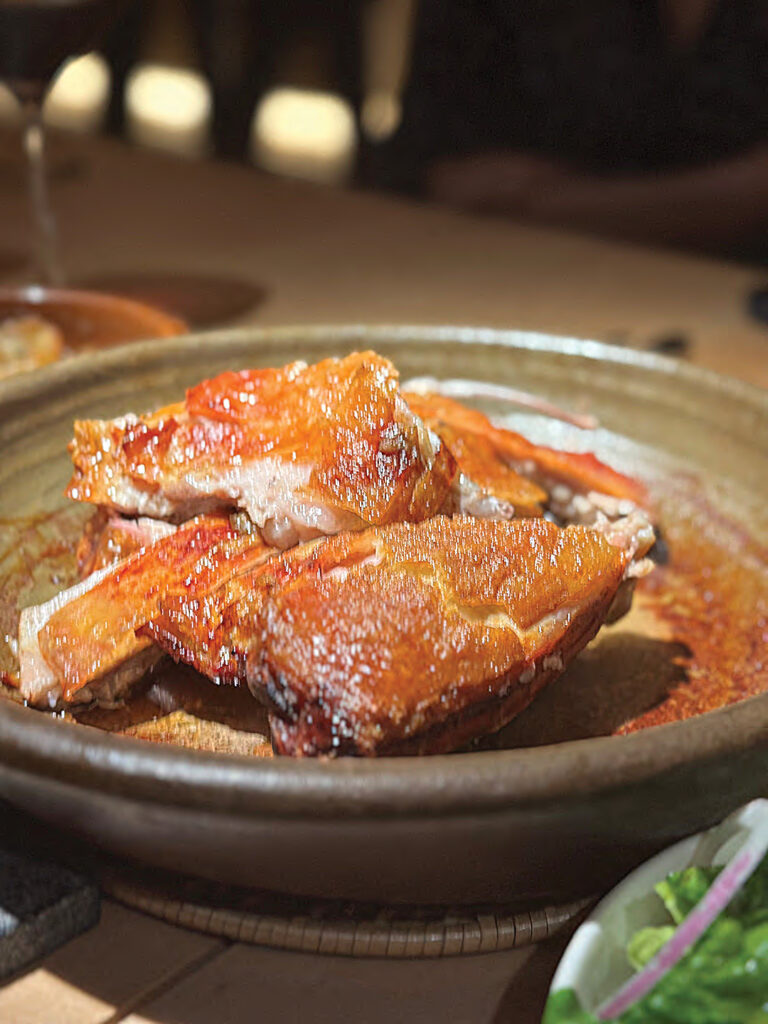
Main attraction
“A lot of people can do an amazing cochinillo in the Philippines,” says Chele, who also lends his culinary knowledge as a consultant to several restaurants in Manila, Tagaytay and Cebu, during a recent private dinner he and Carlo hosted for special guests, including journalists, at Asador Alfonso. “The main attraction here is the lechazo or roasted baby lamb.”
Like most of the ingredients used at Asador Alfonso, including the tomatoes and certain vegetables, lamb meat is imported directly from Spain. In lieu of roasting mutton, or the meat of a full-grown sheep, Chele insisted on the meat of two- to three-month-old suckling lambs for its juicier, more tender and more flavorful quality. Like the cochinillo, the best lechazo is also prized for its crispy skin, he says. During the private dinner, the chef and his team oven-roasted slabs of lamb meat at temperatures ranging from 120 to 200 degrees centigrade.
Indeed, the dish lived up to its promise as a fitting piece de resistance to the nine-course meal Chele and fellow Spanish chef Rodrigo Osorio prepared for their guests during the private dinner. It was pure melt-in- your-mouth goodness sans the often-gamey texture and “anggo” (strong peculiar odor) of certain imported beef and mutton varieties.
Another noteworthy dish worth the trip, which Chele again lovingly shared with his guests that night, was the carabinero or flat-grilled Spanish red prawns. Found only in the Mediterranean waters off Spain, the delicacy — from its sweetish-salty and crunchy head down to its juicy flesh — is best eaten with one’s bare hands, as Chele himself reminds his guests.
“These prawns were just lightly cooked with salt for less than two minutes. The flavor is really in the head. You really must suck the head to get to savor all that flavor. So, we encourage everyone not to use any cutleries when eating them,” Chele says.
For more emphasis, he adds in jest: “If I see you using your cutleries to eat the prawns, I will stop the dinner. No food for you!”
Chele is also equally proud of the boquerones, Spanish fish marinated in vinegar, parsley and extra virgin olive oil, and Spanish anchovies garnished in wood-fired red peppers, which he served earlier.
Mother’s recipe
To cap off the hearty meal, he and Rodrigo came up with their version of the leche flan. Redolent with the scent of vanilla, the creamy concoction was derived from a family recipe Chele’s mother handed down to him.
Unlike Gallery by Chele, which the chef reiterates isn’t a Spanish restaurant, but nevertheless a fine dining one focused on local ingredients and sustainable produce, Asador Alfonso isn’t into serving degustation or tasting menus. Diners can choose from certain dishes on the ala carte menu as well as savor items in one-night-only menus Chele promises to come up with every so often. And since serving sizes are relatively big, two or three people can share a dish, say, of lechazo, anchovies and boquerones. “That’s why it’s important that they make reservations,” he says.
“There’s more to Spanish gastronomy and culture than authentic paellas and tapas. This time, we have come up with a roasting house where the star and heart of the concept is the oven.” — Chef Chele Gonzalez
Doing so would give the restaurant enough time to come up with a special menu, which changes depending on the season and availability of ingredients.
And unlike Enye and Samira, two restaurants located in Cebu and Tagaytay, respectively, wherein Chele does consultancy work, his latest baby is neither a conventional Spanish restaurant specializing in tapas, ceviche and paella nor is it a Cantabrian one celebrating mostly the bounties of the sea.
“I believe that there’s more to Spanish gastronomy and culture than authentic paellas and tapas,” the chef, a native of Cantabria, a region in Northern Spain, explains. “This time, we have come up with a roasting house where the star and heart of the concept is the oven.”
He adds: “Everything we do is always a challenge. I believe that a chef needs to grow, learn and evolve every single day. I have Rodrigo with me and his wife Irene (Asador Alfonso’s maître d’), and together we will make magic.”
The equally celebrated Carlo also lent his magic to what was previously meant as the Calma family’s weekend getaway. Construction was done in earnest during the onset of the pandemic since Carlo’s elderly parents needed an unspoiled and relatively secluded destination to shelter in place.
Not your typical weekend farmhouse
Carlo’s dad, Pabling, who at 94 remains active and alert, is a seasoned contractor. Turning a rustic farm into a more livable space for his family and his animals has always been the old man’s dream. In essence, father and son collaborated on the project.
“Before work began on the project, he would call me every day telling me to make a house for his chickens, roosters, pigeons and goats,” Carlo shares. “From there the project evolved little by little. Of course, I would not be happy doing just the typical weekend farmhouse.”
Somewhere along the way, the family decided to turn the main part of the building housing their weekend retreat into a destination restaurant. Thus, the geometric structure, which Carlo says is inspired by the nearby Taal Volcano, comes with four smaller contiguous structures housing the private spaces of Carlo, Carlo’s brother and his wife, and their parents. The fourth private space, a much smaller one, is reserved for overnight guests.
The restaurant’s main dining area on the first floor can sit up to 40 to 50 people. Several semi-private areas on the second and third floors can accommodate smaller groups of up to 20 guests. Asador Alfonso is also open to private functions like weddings. An outdoor area between the main building and the swimming pool can accommodate additional cocktail and dining tables, allowing the couple to invite as many as 100 people.
People familiar with Carlo’s work can immediately see the architect’s trademark touches that are both minimalist and sculptural wonders in his latest work. They include high ceilings, cantilevered overhangs, straight and sloping lines that double as architectural flourishes and a series of undulating and slatted woodwork on certain sections of the ceiling that adds to the place’s wow factor while filtering artificial light.
Carlo has also chosen to do away with color, leaving large portions of both the structure’s interior and exterior unpainted. Painted areas are usually covered in neutral shades, primarily off-white.
To honor his mom who’s into ceramics, Carlo accessorized the restaurant’s tables and ledges with white ceramic birds, which also mirror the place’s topography, as it hosts a good number of migratory birds during certain periods of the year.
“After all that work, we’re now ready to accept guests,” he says. “But on my end, I’m not yet done. So, expect to see subtle changes and additions here and there in the months to come.”
As far as Chele and Carlo are concerned, Asador Alfonso will continue to be a work in progress.

